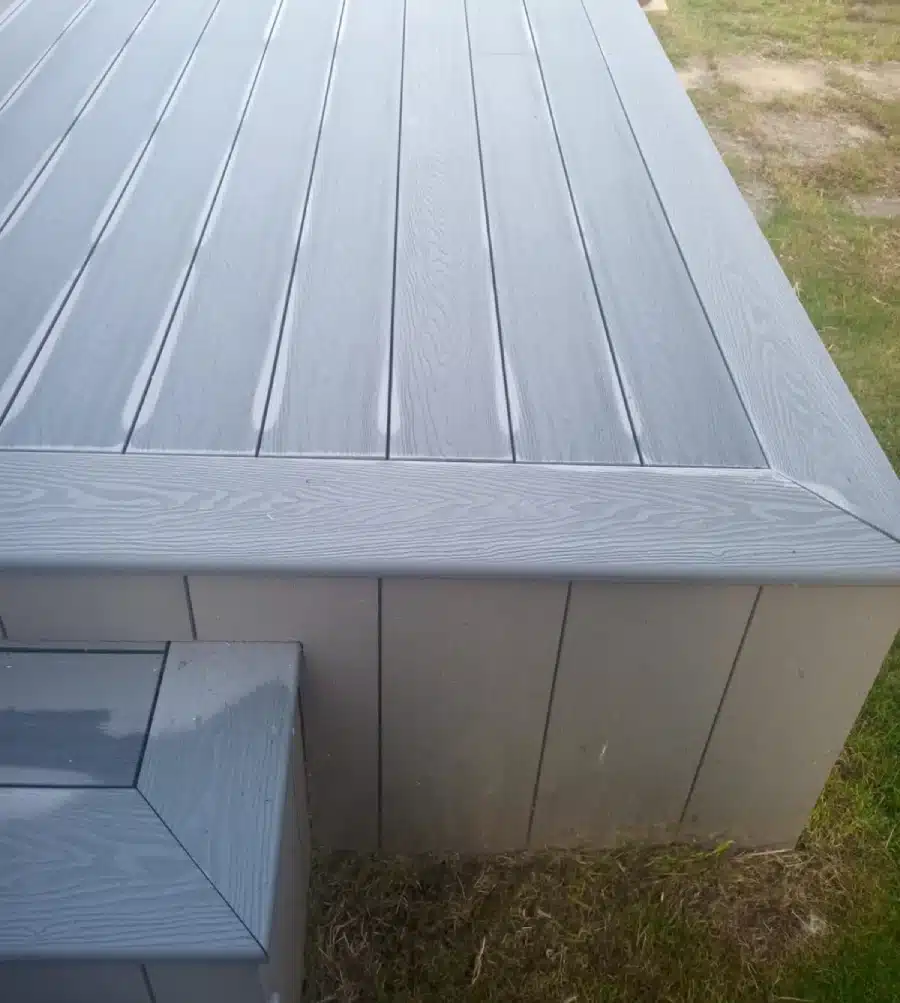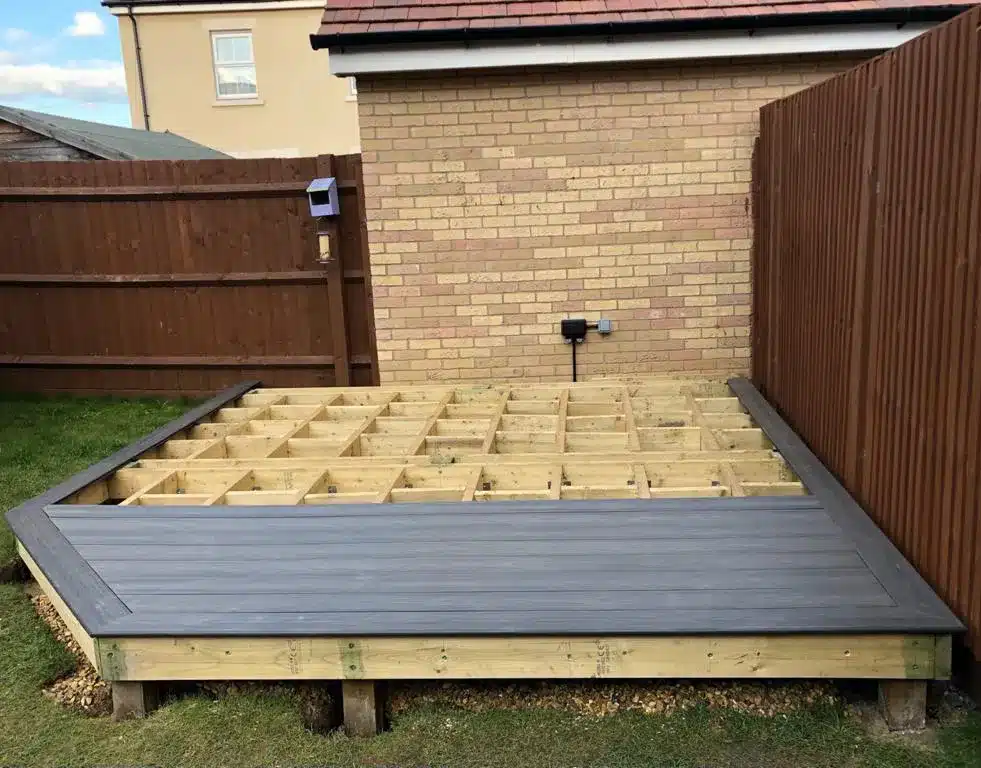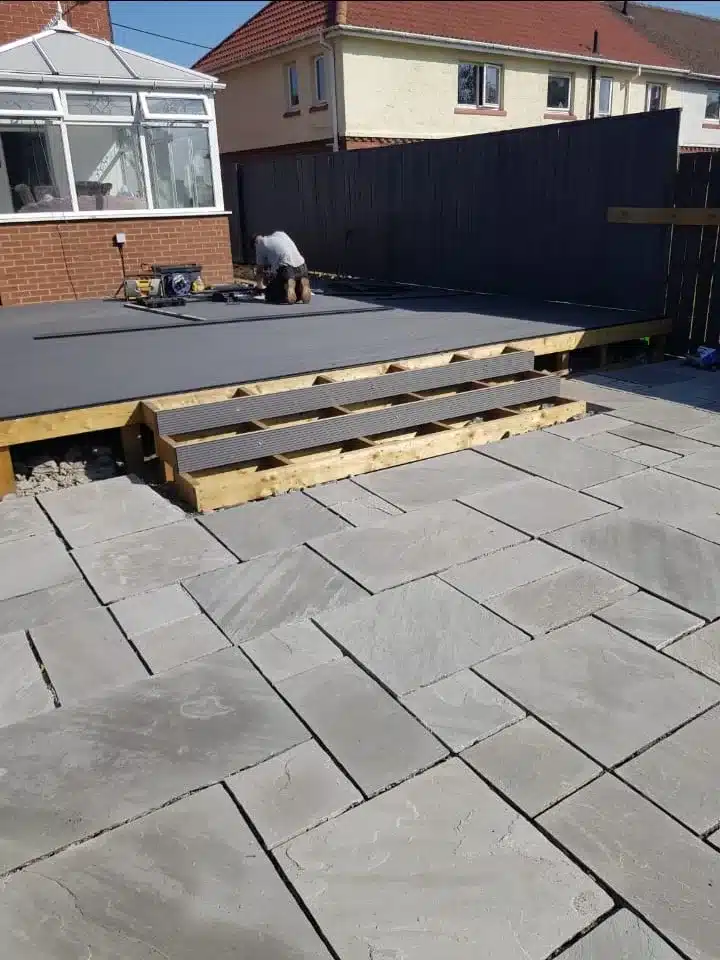Can You Pour Concrete Over Wood Decking?
Leaving a slight overhang is a common practice in deck building. Overhanging is allowing the boards to extend past the decking frame. Letting your deck overhang has both advantages and disadvantages. Many builders design wood decking to overhang, but can you do it on composite boards as well? On this page, we will answer this question and others like, what are the benefits and drawbacks of overhanging? How much overhang should your decking have?
Can Composite Decking Overhang?
Like any other decking, you can design composite decking to have an overhang. However, it should be part of your deck planning and layout design. You can create an overhang using several methods. For instance, after installing the decking boards, you may opt to leave a few inches off the boards. Another alternative is to set up picture framing, leaving a slight extension. In any case, you will need to include it in your decking plan design.

How Much Can a Composite Decking Overhang
While it is a common practice in construction, many still wonder how much decking can extend over the edge. The answer, however, is far from simple. Several factors determine how much you can overhang composite decking.
First of all, you will need to consult your local building regulations when it comes to overhangs. There may be a specific instruction or requirement depending on the area where you live. However, in some cases, there is no such specific regulation. What then? The rest is up to the manufacturer’s instructions and guidelines. Manufacturers may also test their products to see how much their boards can overhang. Some brands may use third-party inspectors for testing. Once testing is done, they can release information regarding their decking products.
If there are no clear instructions from the local building regulations or the board’s manufacturers, there are other ways to determine maximum overhang. As a general rule of thumb, an overhang should not exceed 25mm. For wood decking boards, it ranges from 10mm to 50mm. If you plan to picture frame your decking, many recommend an inch of overhang.
For composites, many consider 25mm as the ideal measurement. However, hollow composites don’t have as much tensile strength as lumber or solid composite boards. For this reason, many leave only 20mm for hollow composite boards or below of overhang or even flush the decking boards entirely. If you plan to install fascia boards, you can overhang the composite decking boards by 20mm before attaching the fascia boards.
Benefits of Overhang
As mentioned, there are several benefits of overhanging your decking boards as opposed to flushing them. One of the main reasons why many extend their decking over the subframe is due to aesthetics. It drastically improves the appearance of your composite decking. It also slightly hides the outer joists of the decking. For elevated decks with stairs, overhangs also create a flawless transition between the stair nosing and the decking boards.
Another crucial reason to overhang is to protect your substructure from moisture. If you have a wooden frame, water damage is one of the biggest concerns. Extending the decking boards past the edges help redirect water from rain, snow, or spillage away from your decking frame. In doing so, you can maintain your deck’s structural integrity, making it last longer.

Disadvantages of Overhang
While there are several advantages of overhanging your composite decking boards, there are also a few disadvantages that you may need to consider. For instance, composite decking boards may leave unsightly and unappealing end cuts. Producing cleaner and smoother cuts to composites may prove difficult without the right tools.
Another issue is that the end cuts of composites may be susceptible to several problems. While composites are water-resistant, these end cuts are more exposed to the elements than normal. The exposed ends could absorb moisture, causing the decking boards to warp or increase mould growth. Not only are the decking boards affected, but the frame as well.
Whilst overhanging of composite decking boards is a popular choice, you run the risk, especially with hollow composite decking boards of reducing the board’s structural integrity possibly leading to snapping, breakage and potential accidents.
If you intend to overhang your composite decking boards, there are some ways you can bypass these disadvantages. For instance, you can use sealants, trims and end caps to protect the cut ends. Not only will this hide the unsightly or rough edges, but it will also shield the boards from moisture.
The best solution when over hanging composite boards for us is to use a solid core bullnose board, using bullnose boards wont exposed the core, due to the boards design having a rounded edge.
Should You Overhang Your Composite Decking?
You can overhang composite decking to improve the deck’s appearance. Besides aesthetics, it can also help prevent moisture damage and protect the decking boards and the subframe. However, you may want to check in with your local building regulations and manufacturer’s manual for instructions regarding overhangs. In general, it should not exceed 40mm to ensure safety on a solid composite board and should not exceed 20mm with a hollow board.
How to Remove Decking With Stripped Screws




